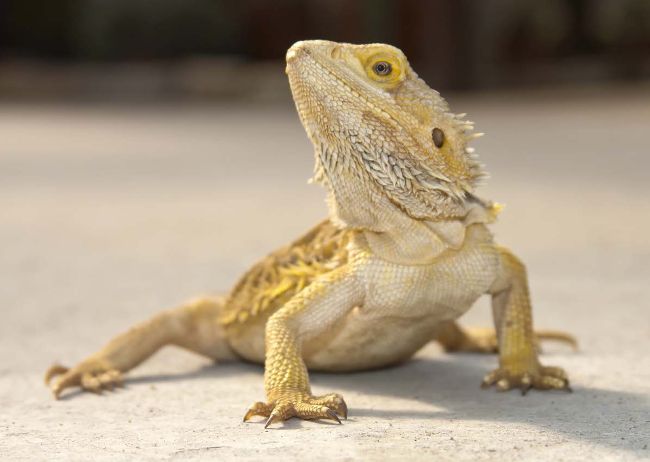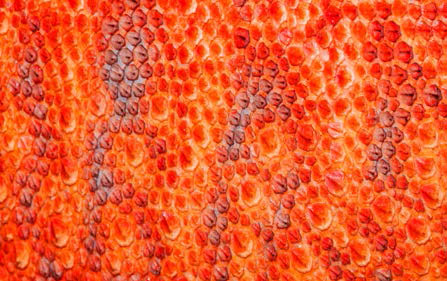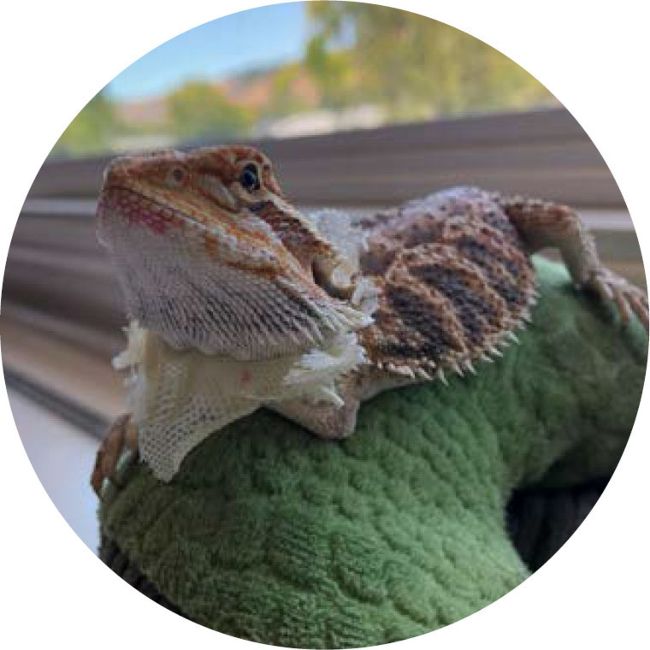Shedding in beardies
While cats and dogs moult, so lizards like the bearded dragon will shed their skin instead. This can be a worrying time, however. So why and when does this occur, and what can you do to help? Peter Hawkins provides the answers.
Peter Hawkins
Scientifically known as ecdysis, shedding is in fact a natural process that your bearded dragon will experience throughout its life. Yet this can also provide important insights into an individual’s health and well-being, and may reflect underlying medical issues which you will need to address, so it pays to be observant.
Why does this process occur?
Bearded dragons will shed much more frequently when they are younger and growing fast, although they will also continue to do so when they are older, since this provides a means of replacing damaged or worn skin.

Bearded dragons may sometimes use their sharp claws to scratch off pieces of skin on accessible parts of their body when shedding.
The shedding cycle
A beardie’s skin is made from a keratin-based protein. This is watertight, unlike that of amphibians, and is not elasticated like ours, which therefore means that as the lizard grows, so it must therefore shed its skin. Imagine trying to fit into a tight shirt or blouse. You will just end up ripping it, or popping the buttons either when you sit down or move. That’s much the same for beardies as well.
The shedding progress varies depending on age. During these vital early growing months, the shed will more often than not be an all over-shed, which is typically completed in just a day or so.

Bearded dragon skin in close-up.
■From 0-6 months -shedding is an almost weekly occurrence at this age, reflecting the rapid growth rate of these lizards through this early period of life. It can therefore be taken as a positive sign that your young bearded dragon is doing well.

Young bearded dragons shed more frequently than older individuals.
■From 6-12 months - when most of the rapid growth phase has been completed, shedding becomes less frequent. It will probably occur every couple of weeks in the case of a bearded dragon around six months of age, slowing to around once every couple of months once the lizard is a year old.
■After 12 months - your bearded dragon will begin to shed less frequently from this point onwards. This is normal though, rather than being a cause for concern.
■At around 18 months - when it is no longer growing to any significant extent, a beardie will only shed a couple of times a year. Think of this as more of a change of clothes than anything else.
Over the course of time, the surface of a beard’s skin can become damaged through wear, appearing scraped and often dirty too. The skin acts as a protective barrier over the body, and so this is why, although the lizard will no longer be growing significantly, it will nevertheless require a fresh skin covering.